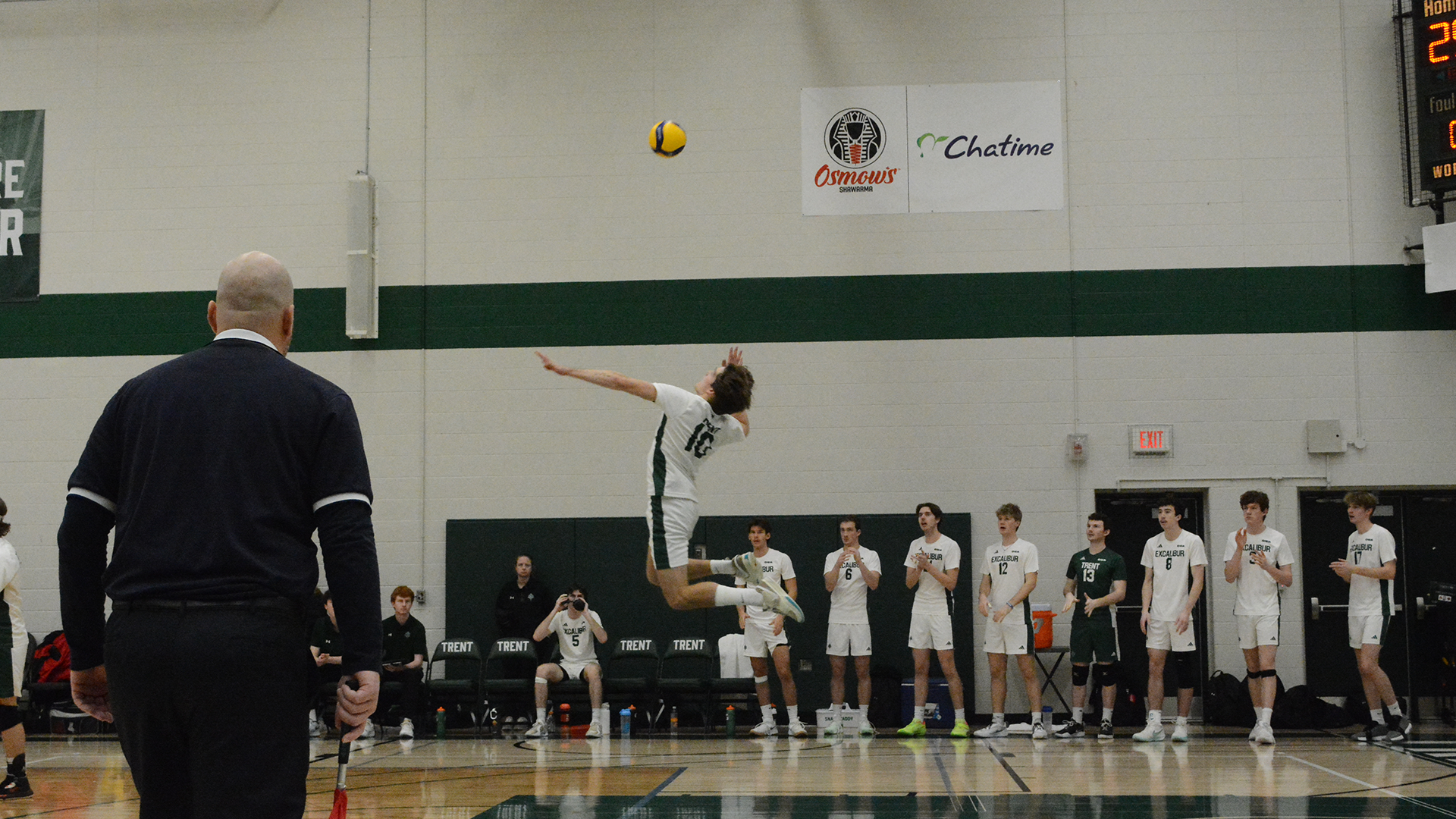[content warning: Although it contains no overt or graphic details of bodily violence, this piece discusses sexual violence on campus.]
On January 23, first-year Journalism and Gender Studies student Shira Rubinoff published a petition to Change.org targeted at Trent University following sexual assault charges made on campus.
Rubinoff says she responded very quickly after hearing through a friend that an acquaintance of theirs had sexually assaulted a fellow student.
“My friend messaged me and said “Hey, you need to know this: this guy hurt someone,” Rubinoff recalls. “So, I obviously immediately blocked him on everything [online/social]. I wanted to make sure that the survivor was [okay], see how she was, how she was holding up, offering help if she needed anything.”
Her urgency then grew when she learned that Peterborough Police had arrested the acquaintance for the same actions, yet he was still attending classes.
“He was arrested, banned from all residences, but still allowed to attend his classes, except he was not allowed to attend the classes [with people that] the [character] witness statements came from,” she explains. “He was not allowed to attend all his classes, so he had to drop those classes. He’s still allowed to attend his other classes.”
It was at this point that Rubinoff created the petition on Change.org both to demand the university administration take further action against the accused and other community members charged with sexual assault, and to notify other students.
“In my opinion, I don’t think he should be allowed to be attending the school anymore. As someone under criminal charges for sexual assault, I don’t think he should be able to go to his classes. He should have thought about that before he did something so horrible,” Rubinoff states firmly. “I understand participation and being in lectures and having notes and everything – that’s important for a degree and for your grades, but you can’t expect that to all stay the same. He needs to learn that his actions have consequences.”
“I wanted to protect people on campus because when my friend told me that he was still on campus, still allowed to be in his classes, it really appalled me,” Rubinoff continues. “I was thinking, like, “I can’t let this guy hurt anyone else.” He can’t just be walking around on campus after having done this to someone.”
She explains that her concerns for public safety are in line with the most recent survivor’s concerns, who she commends for her bravery.
“I really am advocating for everyone who’s been affected, everyone who’s a survivor of sexual assault, because it’s difficult to come forward about it. The survivor’s really brave in being so public about it, because I know that she just wants people to be safe,” she says.
By starting the petition, Rubinoff’s goal is “to get a conversation running about how Trent deals with sexual assault situations.” This is done by applying pressure from both inside and outside the immediate Trent Peterborough campus community. Taking a quick glance through the petition, the signatures come from as close as Peterborough and as far away as the United Kingdom and India.
“It’s blown up really quick,” she notes, stating that there was no specific numeric goal for the petition, though the website seems to have set an automatic goal of 2500 signatures. “We got like 1000 supporters in like 24 hours and it’s still growing.” At the time of writing, the petition has over 1800 signatures.
The petition has not come without critique, Rubinoff explains.
“A lot of people have been asking me why I put [the accused’s] face and name up [on the petition webpage],” she says. “Because, if he’s gonna be around on campus, people need to know who they have to be aware of. Just for safety reasons. The university isn’t going to disclose, so someone had to.”
Rubinoff notes that the accused’s name has been made public by the Peterborough Police via its website’s media release page.
The petition has been sent to President Leo Groarke, the university registrar, and the head of security. The administration has since responded by publishing a bulletin on the MyTrent portal called “Statement on Reported Sexual Assault.”
We wish to respond to concerns raised this week about a reported sexual assault on campus. The University takes these concerns seriously. All members of the University community have a right to feel safe on campus and it is important that victims of sexual violence feel supported coming forward.
We can confirm that a police investigation is underway and that measures have been taken to ensure the safety of individuals and the campus community.
In accordance with our policies and applicable laws, the University safeguards the confidentiality of all persons involved in the investigation of an incident. Safety is our highest priority.
Sexual violence is an issue that impacts everyone. If you, or someone you know, have experienced sexual violence, there are supports available to you.
https://www.trentu.ca/sexualviolence/ (January 24, 2018)
“They basically said, “The university takes these concerns very seriously; we protect the confidentiality of everyone involved; and if you or someone know is a survivor of sexual violence please contact us.” It’s a very generic thing,” Rubinoff says of the statement. “I’m glad that they said something. But I definitely think that they need to acknowledge the petition and what we’re asking of them.”
In the meantime, Rubinoff offers some suggestions for both instructors and students navigating the university.
“First of all, whenever you’re talking about sexual assault or anything of that nature, tell people you’re going to be talking about it before you start talking about it,” she begins, with instructors particularly in mind. “Because there are people who have been through it; there are people who it could have been very recent [for] – if it’s mentioned, they could be really upset by the mention of it or talking about it in detail.”
She also suggests giving the option for students to leave the class if they are or believe themselves to be likely to be triggered by the topic at hand.
“[University]’s not always going to be a safe space, but when we have the opportunity, we have to give people a choice [about] if they want to participate in the conversation or not,” she explains.
Secondly, she encourages students and teachers to tell each other about the petition.
“The more people that we have supporting it, the more likely that the Trent administration will see it and do something about it, I would hope,” Rubinoff says.
Finally, Rubinoff suggests getting involved with student groups that are interested in justice for sexual violence survivors. Rubinoff participated in Fleming College’s Take Back the Night march against sexual harassment this past fall, which she enjoyed. She also endorses Trent U What Will You Do (TUWWYD)’s first rally on Monday January 29 at 11 A.M. on Bata podium.
“I was actually not a part of the planning of the protest, but I’m aware of what’s happening,” she says of Monday’s event. “Make your own signs, wear purple, and go there to support survivors of sexual assault.”
Rubinoff wants to make clear that though their aims are very similar, the TUWWYD event is not directly responding to the accused individual discussed. Rather, TUWWYD is confronting “the sexual assault policy at Trent and saying, “This needs to be better.””
“This situation is definitely not the first one that has happened on campus, and I know that for a fact,” Rubinoff concludes. “It’s just the first one in the public eye, which is why so many people are outraged at it.”
Update (January 28 2018):
Bulletin from Trent University MyTrent portal:
On January 24, the University notified the campus of a reported sexual assault. The individual left campus after he was charged by the police. He is not permitted to return to campus and voluntarily withdrew from the University earlier this week. A final decision on the student’s status will be made after investigations by the police and the University are completed, as well as an adjudication process under University policy if appropriate.
In sharing information of this kind, the University always needs to balance privacy and the rights of individuals with our responsibility to ensure that everyone on campus feels safe. Every circumstance is different and, in this instance, the information was deemed to be important in prioritizing safety on campus.
There has been a long tradition of student activism at Trent around awareness and prevention of sexual violence. We are making continual efforts to improve policies and procedures around sexual violence. Both our Sexual Violence Policy and the Charter on Student Rights and Responsibilities were developed with extensive student involvement and input. The AVP Students has been reaching out to students to solicit feedback on campus procedures and resources when a sexual assault occurs.
The University welcomes feedback and comments from students and the entire campus community studentaffairs@trentu.ca .
Sexual violence is an issue that impacts everyone. If you, or someone you know, have experienced sexual violence, there are supports available to you.
https://www.trentu.ca/sexualviolence/ (January 26, 2018)


.png)


.jpg)


.jpeg)



.jpg)

.jpg)



.jpg)




.jpg)

.png)